- Female from above, on leaf
- Female, eating a fly
- Female, face on, on bark
- Female, with prey on Milkweed Flower (1)
- Female, with prey on Milkweed Flower (2)
- Female guarding egg sac
- Male showing palps
- Male from above
- Adult female from above
- Adult female from side
- Adult female facing
Female from above, on leaf
Tharrhalea (Lehtinelagia) variabilis, Tharrhalea (Lehtinelagia) evanida and Tharrhalea (Lehtinelagia) multopunctata are impossible to tell apart in the field and even with a microscope, armed with the recent revision by Pawel Szymkowiak, hard to separate. The epigyne is small and faint, leading to most people thinking the specimen is juvenile, and the palpal organ has only subtle differences.
There may be some clue in the location - Brisbane southward and westward appear to be mostly Tharrhalea (Lehtinelagia) multopunctata, while Tharrhalea (Lehtinelagia) evanida seems to be a northern species, widely distributed across North Australia and New Guinea, in common with Tharrhalea (Lehtinelagia) variabilis. However the lectotype locality of Tharrhalea (Lehtinelagia) evanida is Brisbane, collected by Amalie Dietrich. Koch's types were from Mackay and Rockhampton. Two other species Diaea sticta from Papua district, western part of New Guinea Indonesia and Diaea haemodactyla from Mackay, were synonymised with Tharrhalea (Lehtinelagia) evanida. Other specimens were collected all across Queensland and a few from northern NSW, meaning that Tharrhalea (Lehtinelagia) evanida and Tharrhalea (Lehtinelagia) multopunctata are definitely sympatric, meaning they occur in the same locations. Tharrhalea (Lehtinelagia) evanida is only rarely found in Brisbane's west and further westward, or south of Brisbane, even though it is common at Boondall Wetlands on Moreton Bay and on Queensland islands of the Great Barier Reef. It is rare in NSW, only known form single sites Taree, Brooklama and Bryon Bay. It is known in the Northern Territory. Evanidus in Latin means vanishing, negligible, passing, probably referring to the barely discernable epigyne.
Tharrhalea (Lehtinelagia) multopunctata is widespread in the north-eastern and eastern part of mainland Australia (Queensland, New South Wales, especially Sydney where Tharrhalea (Lehtinelagia) evanida is not found) and on the islands of the Great Barrier Reef and in New Guinea. Also in one site in South Australia, one site in Western Australia and one site in Victoria. Multopunctata means many-spotted, referring to the male.
Tharrhalea (Lehtinelagia) variabilis is a rare species distributed mostly in Queensland. The Latin word variabilis means variable, changeable, which may refer to the variable morphology (appearance and shape) of this species.
Flower spiders are diurnal and are common on Australian native flowering plants such as grevilleas and wattles. They are territorial with only one spider occupying a flower, unless they are male and female together for mating. The occupant will often sit on a flower until the petals wilt before moving onto another flower. At night flower spiders hide under the petals or leaves.
This genus was previously Diaea and some legacy material using Diaea still remains in this web site. It is gradually being attended to. The bracketed (Lehtinelagia) refers to the fact that this genus was previously separate from Tharrhalea and well known by that generic name.
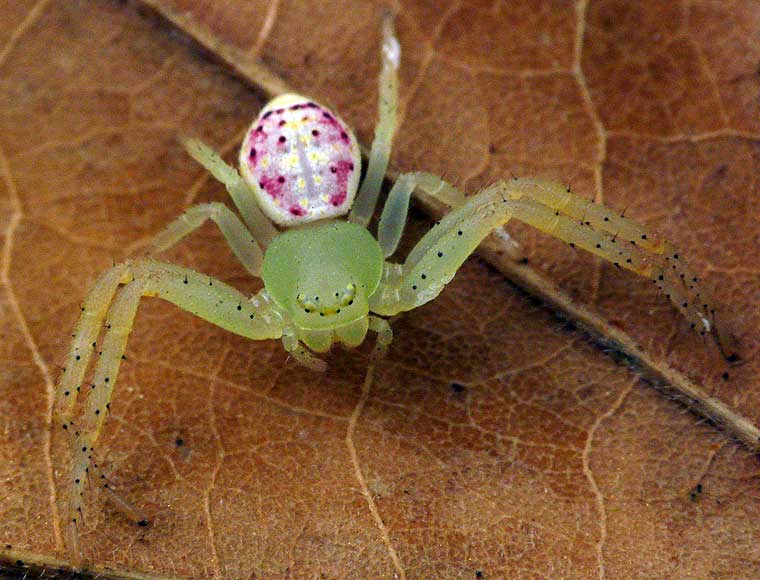
Female, eating a fly
This photo shows Diaea evanida reducing its prey to an exoskeleton, a useful trick for museum curators who could use the exoskeleton as a preserved specimen. Diaea evanida is a flower spider capable of sitting undetected in a flower, waiting for prey.
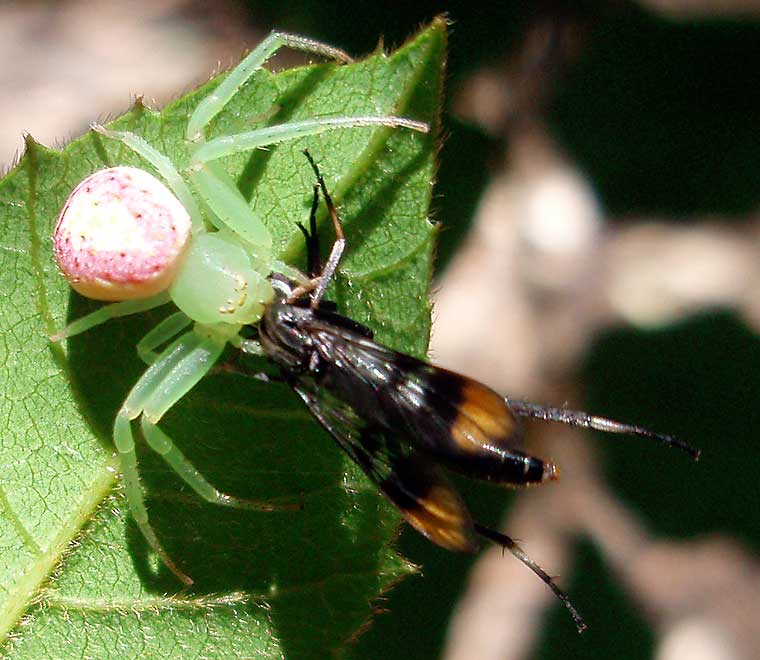
Female, face on, on bark
This Diaea evanida was seen in our garden at The Gap, quite late in the season, on Saturday, 12 April 2008. They less likely to be seen in Autumn due to the onset of colder weather. We looked for Diaea because some Sydney Arachnologists were wanting to collect some and were not finding them locally. This single specimen would probably not warrant their trip. Robert Raven (Queensland Museum) suggested the tropics might yield more.
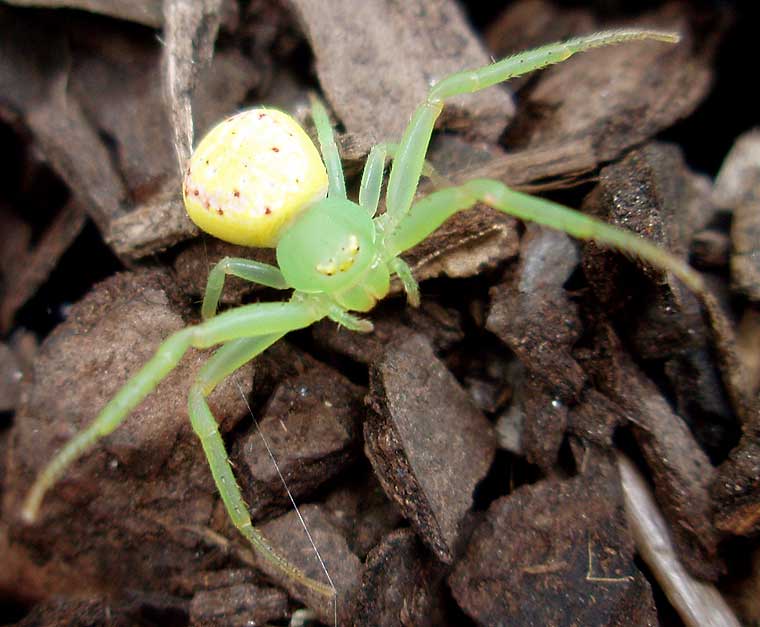
Female, with prey on Milkweed Flower (1)

Female, with prey on Milkweed Flower (2)
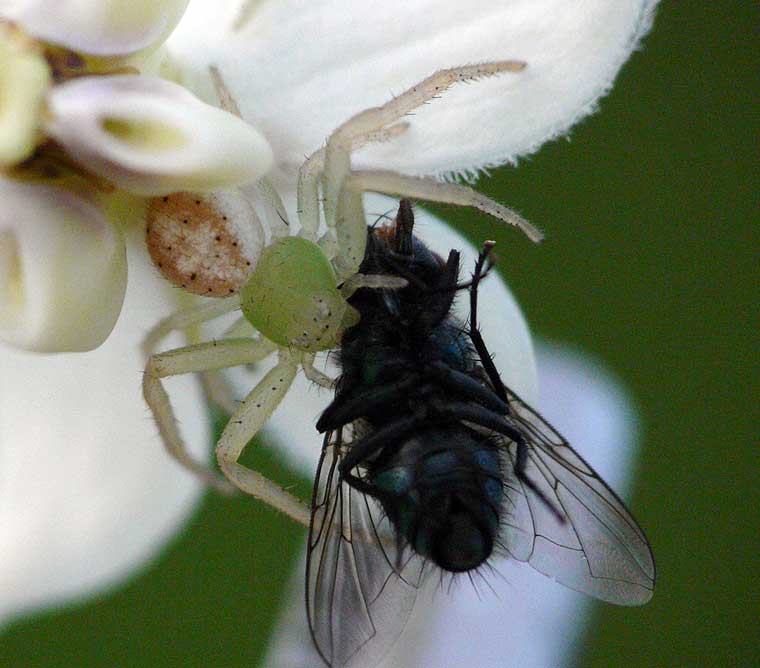
Female guarding egg sac
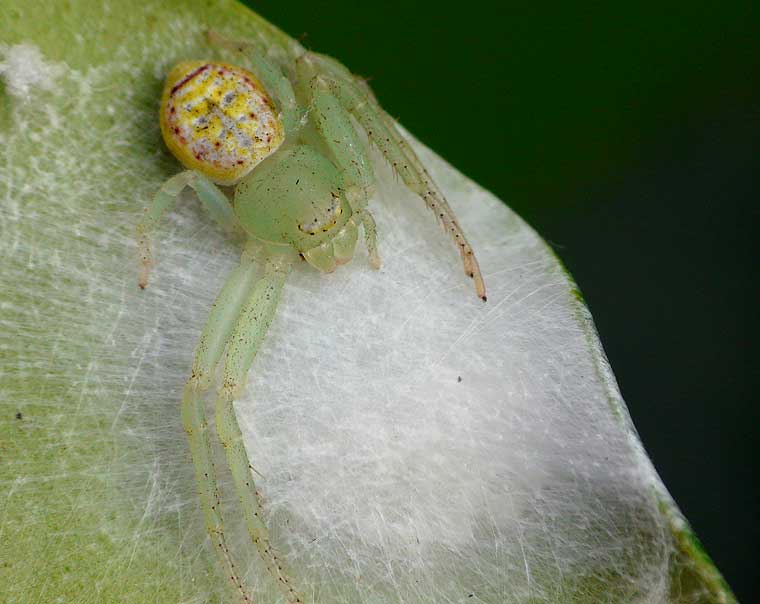
Male showing palps
The male is somewhat differently patterned, with a relatively bigger cephalothorax, as with many males in many families. This one was collected in a garden in Bromwich St, The Gap, adjacent to Fish Creek.

Male from above

Adult female from above
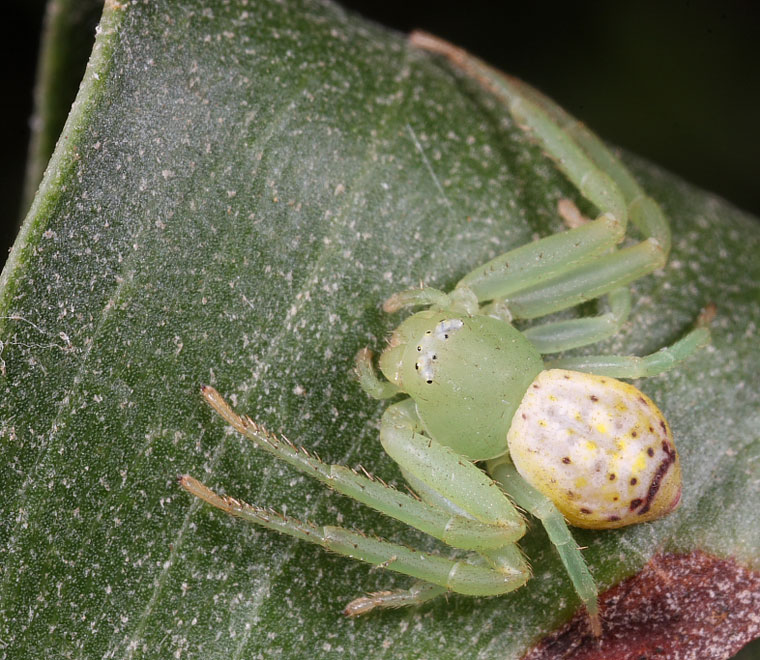
Adult female from side
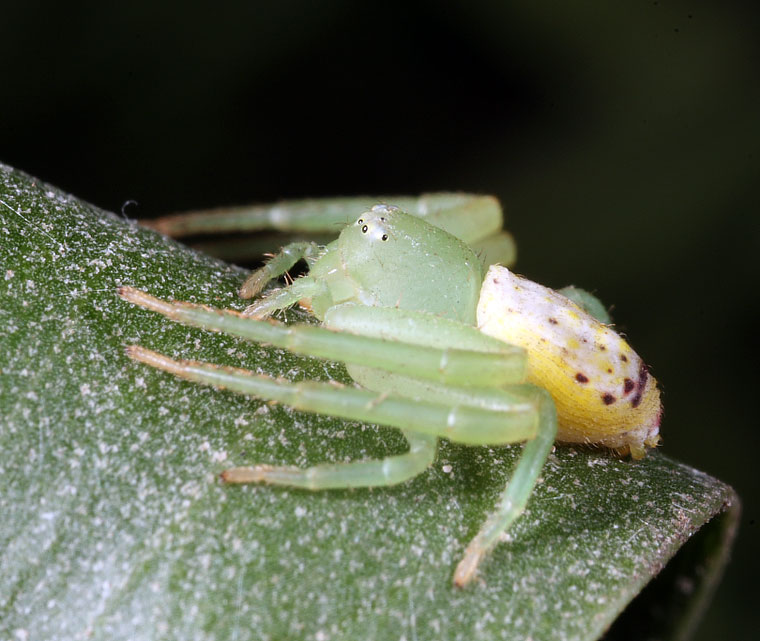
Adult female facing
